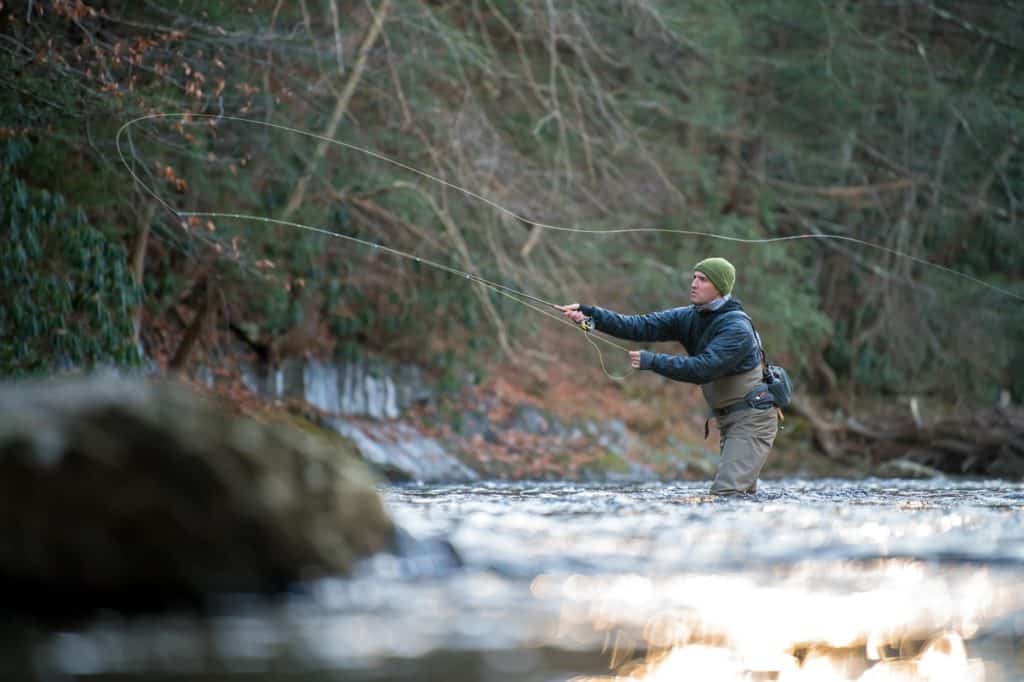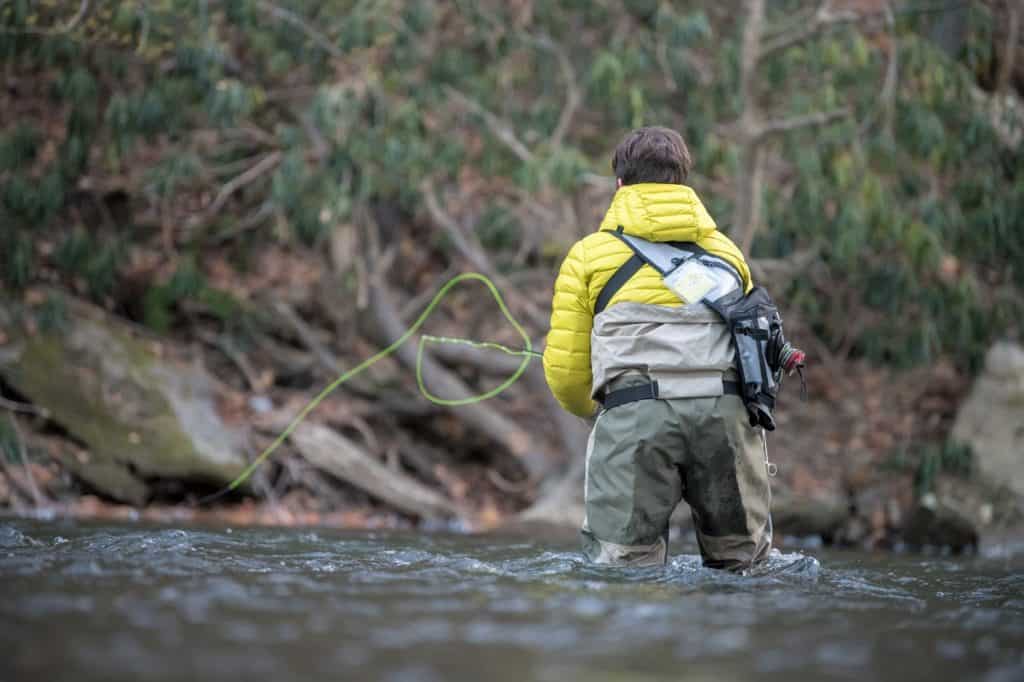Fly fishing might seem intimidating at first, but with a little practice, you can be casting like a pro in no time. This guide focuses on two fundamental casts that will cover most situations you’ll encounter: the overhead cast and the roll cast.
Gear Up for Success:
Before heading out, find a spacious area with calm water, like a pond. Having some practice casts with no obstacles around will boost your confidence. Remember, casting distance comes later – focus on mastering the motions first. Lay out some fly line on the water – the tension will help “load” the rod for easier casting.
The Overhead Cast: The Workhorse of Fly Fishing

This is the classic cast you envision when picturing fly fishing. Here’s a breakdown:
- Grip and Stance: Hold the rod in your dominant hand and pull line off the reel with your other hand. Stand with your feet shoulder-width apart for stability.
- The Backcast: Start with your hands together, then smoothly separate them. Your right hand (assuming you’re right-handed) moves back like pointing behind you, while your left hand drops towards your hip. Imagine strumming a giant guitar! The line follows the rod movement – you’re casting the line, not the fly. Beginners, keep your eye on the rod tip. Stop the backcast when your arm reaches 90 degrees and the rod tip points slightly beyond that. The line should be fully extended behind you at this point.
- The Forward Cast: Here’s where the magic happens. With the line straightened out, feel the weight transfer to the rod. Now, bring your casting arm forward, pointing your thumb at the target area while loosening your grip on the line with your left hand. This sends the fly towards its destination.
- False Casting for Distance: Want to reach further? Practice “false casting.” This involves repeating the back and forth motions without the fly touching the water. Gradually release more line from the reel with your left hand while retrieving it during the forward cast. Once you have enough line out, unleash the full forward cast for a longer reach.
- Arm Motion: Think slow and controlled. Imagine holding a book under your armpit while casting – you don’t want it to fall!
The Roll Cast: A Master of Tight Quarters
This cast shines in situations with limited space or overhanging obstacles. Here’s how it works:
- Setting Up: With some line extended on the water, lift your rod tip towards the sky. The line will form a loop or bow behind you.
- The Roll: When the line forms a complete D-shape behind your rod (the rod being the straight part of the D), mimic the forward cast motion used in the overhead cast. This propels the line forward in a smooth presentation.
Choosing the Right Cast:
- Overhead Cast: Your go-to for distances greater than 20 feet. Use it for streamers, tiny dry flies, or targeting specific areas. When in doubt, a single-haul overhead cast can usually place your fly strategically.
- Roll Cast: The ultimate tool for precision and tight spaces. It excels at presenting nymphs or emergers at close range. Perfect for dissecting small streams or repeating drifts in productive areas.
Practice Makes Perfect!

Head to your chosen still water and start practicing these casts. Once you feel comfortable, explore the streams in your area and put your newfound skills to the test! Remember, fly fishing is a journey, and mastering these casts is a significant step towards becoming a successful angler. Tight lines!
Images/Source: FlyCrate





